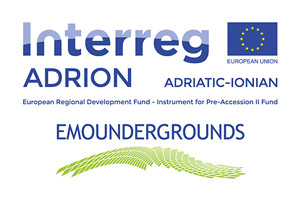30MONUMENT MUSEUM TO THE DEPORTED
29) EX FOSSOLI CAMP
Just a few kilometres from the centre of Carpi there are still visible traces of a sorting and transit camp, used in 1944 by the SS as prelude to the concentration and extermination camps of the Reich. A prisoners’ barrack, inside the camp, has been completely recovered and then converted in a location for cultural activities dedicated to the memory and deportation themes. An area has been set up as a permanent exhibition on the history of this camp. During the 7 months of the camp use, 8 convoys of prisoners left Carpi railroad station and 5 of them were directed to Auschwitz, for a total of 5000 people deported. Inside the station a memorial plaque commemorates those prisoners: among them Primo Levi who left for Auschwitz on 22th February 1944. The camp and the Monument Museum are managed by Fossoli Foundation which was created in 1996 with the aim of spreading historic memory and promoting historical-documentary research on Fossoli camp.
listen to the audioguide
30) MONUMENT MUSEUM TO THE DEPORTED
The Museum to the Deported was inaugurated in October 1973 in the fifteenth-century rooms on the ground floor of the Palace towards the fortified tower; it was designed by BBPR’s studio of Milan to commemorate the Nazi Holocaust victims and for the presence of a shelter and sorting camp in Fossoli, just a few kilometres from Carpi.
The visit develops through thirteen rooms characterized by a sober and basic architecture with grey plastered walls engraved with red coloured prisoners’ quotes from the Letters of members of the European Resistance sentenced to death.
In some rooms there are engraved graffiti reproducing drawings on deportation by great painters like Longoni, Picasso, Guttuso, Cagli and Léger.
The most traditional museum area is represented by few significant objects inside cases embedded to the floor, to underline once again the importance of the words on the walls.
In the external courtyard, as integral part of the tour, it is possible to see sixteen steles in reinforced concrete, six metres high, on which the names of European concentration and extermination camps have been carved. Red roses grow on those steles, placed in the courtyard in an apparent disorder, a symbol of the blood poured in the killing camps during the Second World War.
listen to the audioguide
31) HALL OF NAMES
The itinerary concludes in the Hall of Names. Over 14000 names of Italian deported to Nazi camps have been carved on the walls. In addition to them, there are also the names of Anna Frank, as symbol of all the children died in camps, and Fossoli martyrs killed while trying to escape. In designing this hall, Ludovico di Belgioiso drew inspiration from a synagogue of Prague whose interior walls are covered with the names of the deported Czech Jews.
listen to the audioguide
32) SYNAGOGUES
<p
There are two synagogues in Carpi. The oldest one (1722), which has a still intact prayer room, but without any furnishing, was built on the rooftop of a building of the Portico del Grano.
Not so visible and thus secret, it is reachable only through a system of hallways between roofs and slabs. In 1861 there was the inauguration of a new place of worship following late neoclassical canons . Particularly interesting the elegant interior of the prayer room and the Baroque gate.
This latter synagogue remained open until 1922.
listen to the audioguide



